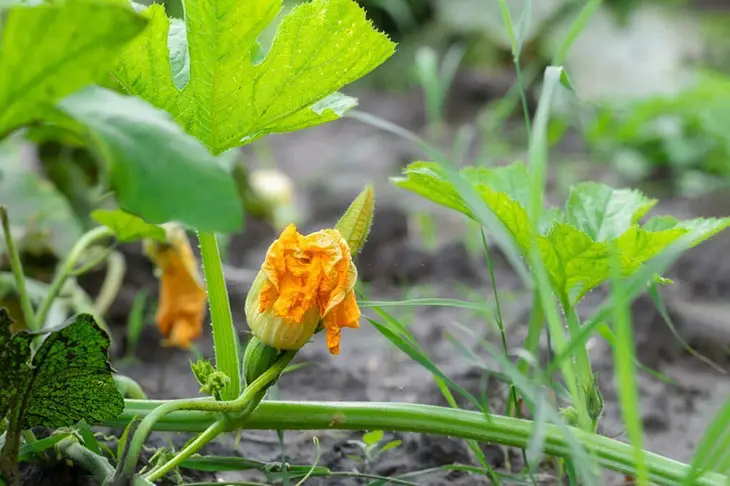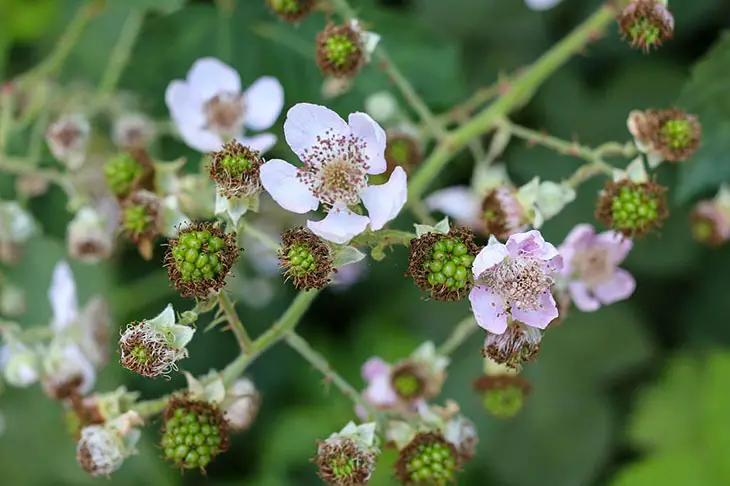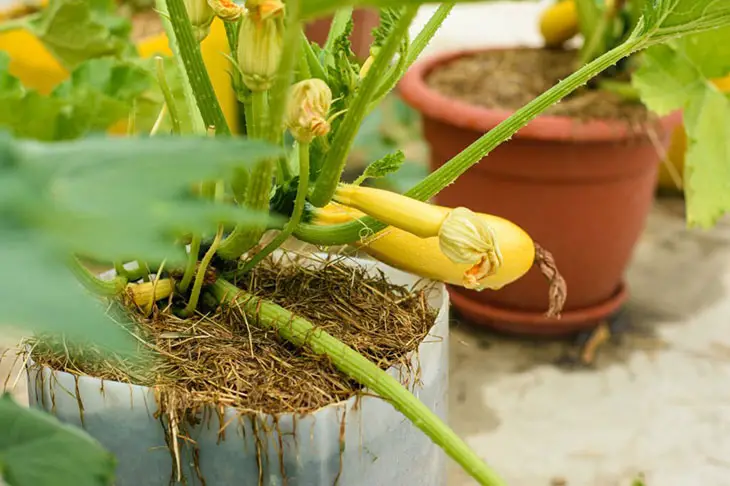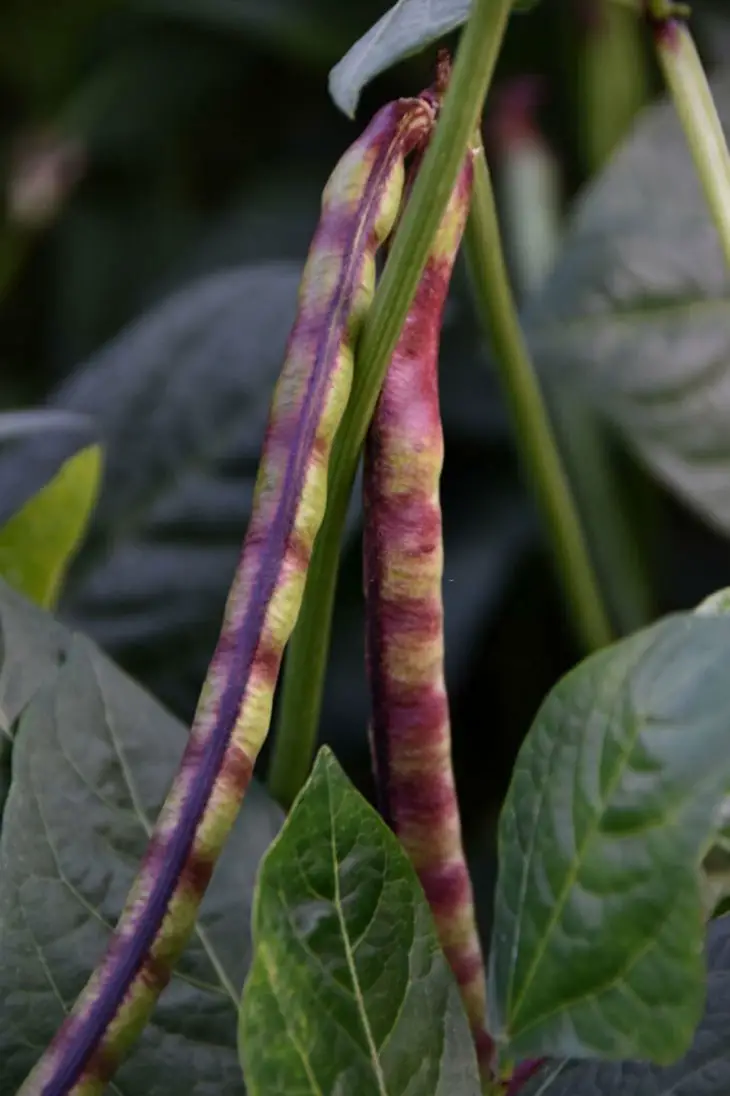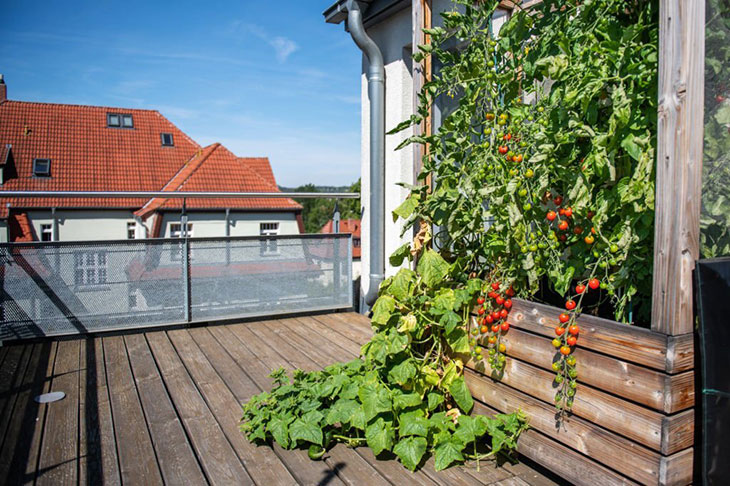
Beloved by amateur and professional gardeners alike, tomatoes and cucumbers are garden staples for the summer months thanks to their ease of growth and juicy, flavorful produce.
So, can I plant tomatoes and cucumbers next to each other?
Yes!
With the right technique, it’s entirely possible to plant them together and get them to thrive. After all, tomatoes and cucumbers actually have the same soil, sunlight, and watering requirements.
This guide can give you all the information you’ll need to start your cucumber-tomato garden immediately!
Can I Plant Tomatoes And Cucumbers Next To Each Other?
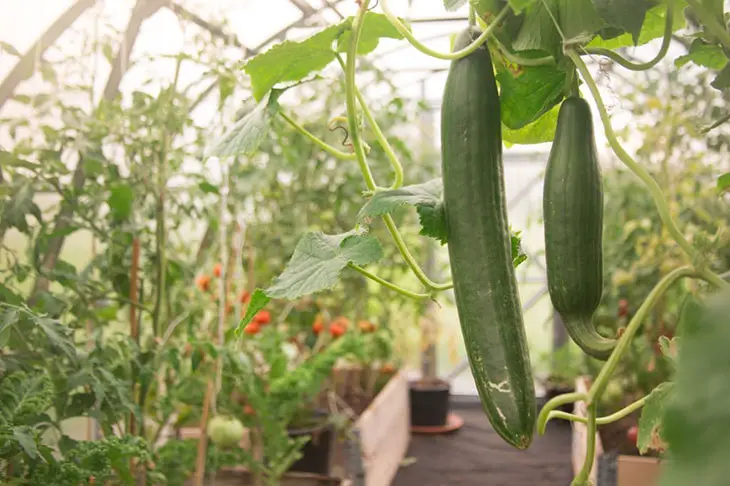
Many people are (rightfully!) anxious about planting tomatoes and cucumbers next to one another.
We’ve received a lot of questions for “Can you plant cucumbers and tomatoes together?” at the editorial.
That’s mostly because these two plants have reputations for not being good team players.
Cucumbers are known to be heavy feeders, meaning the vines use up a lot of nutrients in the soil.
If they’re planted next to other kinds of plants, cucumbers may compete with the companion plants’ roots and deprive them of the nutrients they need to survive.
Cucumber vines are known to be very “invasive.” If you have a small garden and the cucumbers aren’t trained to climb using trellises, they can quickly take over your garden.
They may grow over other plants and shade them from the sun. Needless to say, this can be disastrous for your plants if they need a lot of sunlight.
Tomatoes synergize with many plants, like onions, radishes, and lettuce. But since they can grow very aggressively and wildly, there are many plants that they don’t work with.
So, can tomatoes and cucumbers be planted together? Fortunately, yes.
As we mentioned earlier, cucumbers and tomatoes have similar growing requirements (soil, watering, sunlight, etc.)
So, with the right planting technique, it won’t be hard for you to maintain a good crop of both plants in your garden until they begin to bear fruits.
For traditional planting on a large soil bed, it is recommended to plant cucumbers and tomatoes at least 3-4 feet apart. This same rule applies if you’re growing them on trellises or stakes.
The 3-4 feet distance will give each plant sufficient room to grow and healthily develop without crowding out each other.
It’s important to consider the specific growth habits and size of the variety you are growing. Some combinations may grow larger or have a more sprawling habit than others.
The info written on the back of the seed packets or the plant tags will give you a better idea of how to plant them.
Why Should You Not Plant Cucumbers Near Tomatoes?
Cucumbers and tomatoes planted together can make for a good crop. But you need to consider several things before you start planting.
In truth, the detailed answer to the question of “Can tomatoes and cucumbers be planted together?” are a bit more complicated.
While they won’t kill one another, tomato and cucumber aren’t the best pairing because they can contract similar diseases.
If one crop is hit with a particular disease, there’s a chance that the other crop will be affected, too.
Inhibiting pathogens and diseases is one of the greatest benefits of companion planting, which, unfortunately, is minimal with this pairing.
Here are some of the shared problems that cucumbers and tomatoes can have.
Companion Planting
While it is possible to plant tomatoes and cucumbers next to each other with the right technique, the two plants make for very mediocre companions.
They attract the same kind of pests and diseases, so if one crop is afflicted, the other will surely follow.
Additionally, because both plants are heavy feeders, they may compete with one another for nutrients, water, and sunlight.
That’s why you must give each plant a healthy distance from the other (though still side by side).
Cucumber Mosaic Virus
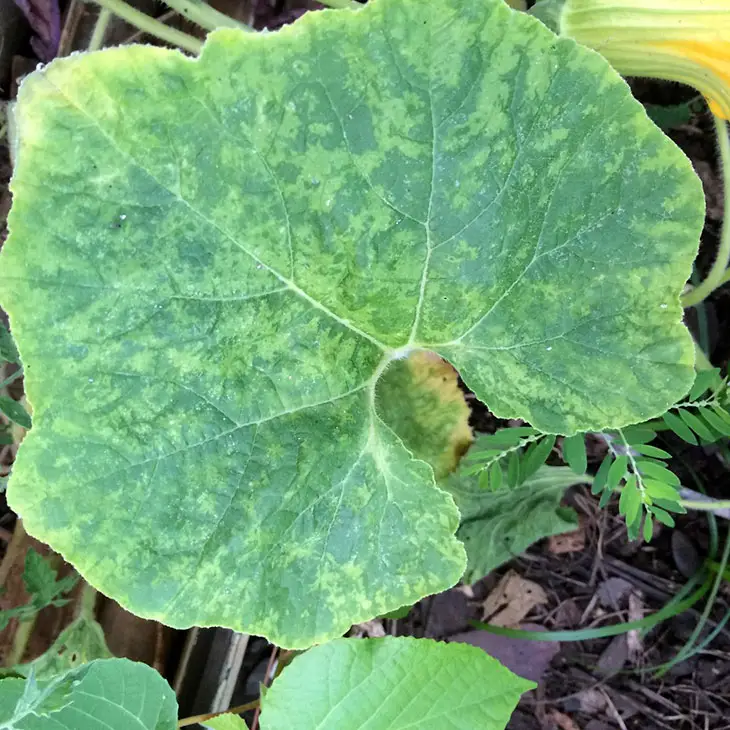
The cucumber mosaic virus (CMV) is a sneaky and destructive little pathogen that can wreak havoc on your cucumber plants.
But it’s not just cucumbers that can be affected. CMV can also target and harm other crops like tomatoes, celery, spinach, lettuce, and flowers.
The virus will suck out the nutrients in the plant and cause them to grow slowly, producing distorted flowers and fruits.
The worst thing about CMV is its rapid spreading rate. The disease is typically spread by tiny pests called aphids. They spread the virus while feeding on plant sap.
When one plant is affected, it may take only a day or two before your entire garden is down with CMV.
Unfortunately, there is no cure for CMV, so you’ll have to be on the offensive at all times. Eliminate aphids by using insecticides.
If you spot CMV in your garden, you must quickly remove infected plants to prevent the virus from spreading further.
CMV is one of the biggest reasons why, for many people, the answer to the question of “Can you plant cucumbers and tomatoes together?” is a No.
Phytophthora Blight
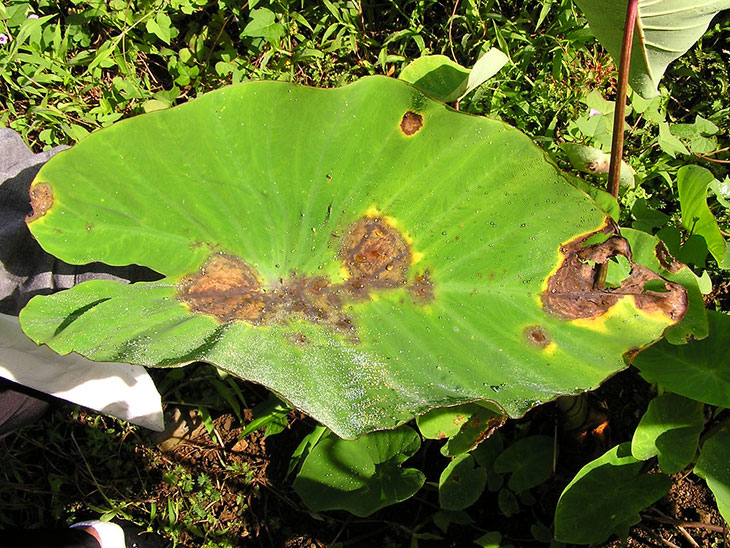
Phytophthora Blight can strike cucumber and tomato plants and other cucurbits, peppers, and eggplants. This disease attacks plants’ roots, crowns, and fruits and causes them to rot.
It’s caused by a type of water mold called Phytophthora capsici and mainly spreads through soil infested with spores and infested water.
The blight will cause the fruit to rot. In humid conditions, the rot will spread rapidly until the whole plant collapses.
If you do spot infected plants in your garden, act fast and remove them immediately to minimize the damage and avoid further spreading.
And to avoid this devastating disease in your garden, practicing good water management and promoting good drainage is important.
Best Companion Plants for Cucumber
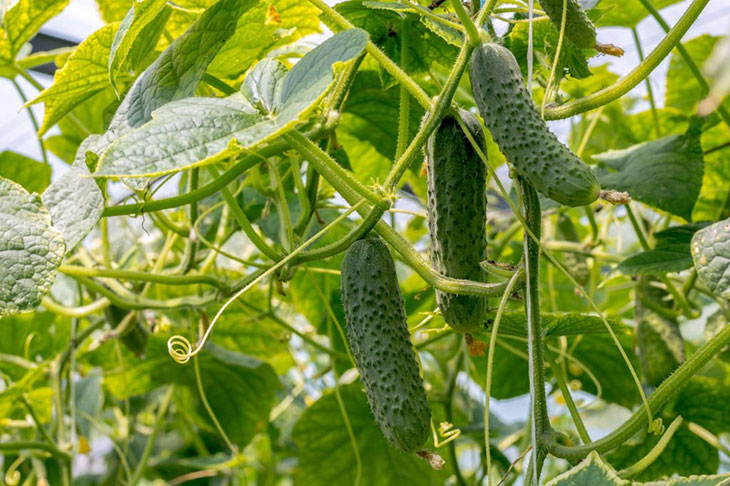
Now that we’ve answered the main question of “Can cucumbers be planted with tomatoes?” … What are the best companion plants for cucumbers if tomatoes aren’t on the table?
Fortunately, there are plenty. Here are five popular options that you can pick instead of tomatoes!
Sweet Corn
The synergy between cucumbers and sweet corn is excellent.
Because cucumbers are climbing plants, if you plant them next to corn, the vines will use the corn stalks as a trellis to climb up.
So, you don’t even have to build a trellis for your cucumbers! You’ll save a ton of space as a result.
Cucumbers love sunlight, but too much of it can scorch them. Sweet corn can act as a natural sunshade and protect them from the sun.
In return, cucumbers can help the corn by repelling raccoons, who dislike the big leaves of the cucumber plants. They also support the corn, retain soil moisture, and reduce weed growth.
Since they work so well together, companion planting of sweet corn and cucumber will make for a low-maintenance season.
But it’s still important to ensure that each plant is properly spaced out, so none overtake the other.
Pepper
Cucumbers and peppers have similar growing conditions, which makes them perfect for companion planting. Both plants prefer warm temperatures and full sun.
Peppers are known to deter pests such as aphids and spider mites, which can also damage cucumber plants.
So, planting cucumbers next to peppers can be a great way to prevent pest infestation and diseases (like CMV, which is spread by aphids).
They can be used as trap crops, too. Pepper plants are more attractive to many insects than cucumbers. So instead of attacking the latter, they’ll attack the pepper plants (which can cause tiny black spots on pepper leaves).
Cucumbers and peppers have different maturity dates, meaning they will be ready to harvest at various times. This can help prolong the harvest season in the garden.
As always, you’ll still have to ensure that each plant has plenty of space between them to prevent them from overcrowding each other.
The large cucumber leaves can easily block out the pepper plants below, preventing them from getting the sunlight they need to thrive.
Legumes
Cucumbers can be paired up well with legumes, such as beans and peas.
The best benefit of companion planting these two types of plants is that legumes can scoop free nitrogen from the air, convert it into a form usable by plants, and release them into the soil.
Cucumbers, like most plants, require nitrogen for growth, so planting them near legumes can help provide them with the necessary nutrients.
Marigolds
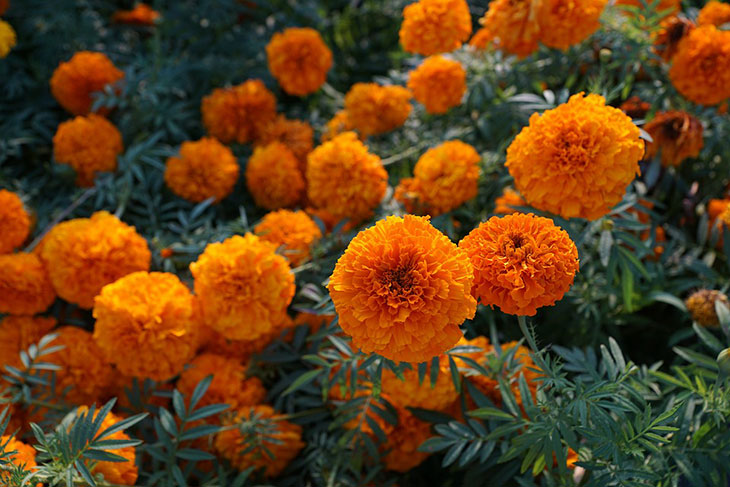
Marigolds have a strong and distinctive aroma known to repel many pests that may damage cucumber plants, such as aphids and cucumber beetles.
The strong scent can mask the aroma of the cucumber, making it less attractive to pests.
However, the scent of marigolds can do the complete opposite for many kinds of insects, like blister beetles and spider mites. That’s why these flowers are also popularly used as trap crops.
Nasturtiums
Similar to marigolds, nasturtiums are planted alongside cucumbers to help repel pests. For amateur gardeners, the sprawling nasturtiums on the ground can lend your garden a beautiful look.
Nasturtiums are more than just flowers, though. The flowers are edible and can be thrown together with fresh cucumber for a nice sandwich! They can also be used to brew herbal teas and vinegar.
Best Companion Plants for Tomatoes
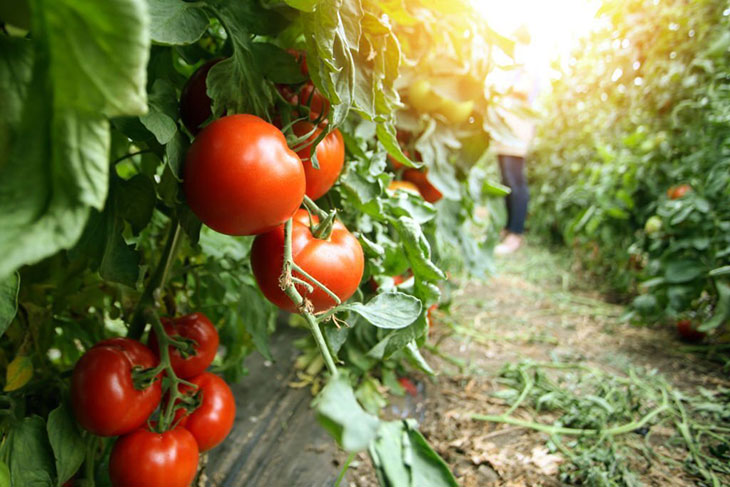
As for tomatoes, here are five options that may work better as companions than cucumbers if you find the answer to the question, “Can I plant cucumbers next to tomatoes?” unsatisfactory.
Basil
Basils are such a popular companion plant to tomatoes that many sources have called them “soulmates.” Indeed, these plants seem like they’re made to be put next to each other.
The basil, which can repel certain insects that may harm the tomato plants, is only second to marigolds regarding insect-repelling ability.
They can shoo away many kinds of pests, like whiteflies, aphids, and tomato hookworms.
Meanwhile, the big leaves of tomatoes can provide shade for the basil. This is important for the healthy growth of the herb. Basil isn’t a full-sun plant and grows better with partial sun.
Additionally, it’s also said that basil can quicken the growth of tomatoes by energizing the soil.
Garlic
The pungent odor of garlic will provide an umbrella of protection for your tomatoes against many kinds of pests, ranging from aphids to spider mites.
And since the garlic bulbs grow underground and their stalks are thin, you can easily plant garlic in between your tomato plants. Other than saving space, it’ll be easier to harvest both.
Also, you should sow your garlic seeds a month prior to the tomatoes. Garlic takes a month longer to mature.
If you do this, by the time the tomatoes are ripe and ready for picking, the garlic should be ready to be dug up, too.
Asparagus
Nightshades, like tomatoes, can be paired off with asparagus very well. The solanine chemical in tomatoes can repel insects from biting on the asparagus shoots and fronts.
Meanwhile, asparagus can keep nematodes from attacking the root system of your tomatoes.
Chives
Chives also functions as a repellent for many kinds of pests that prey on tomatoes. But besides protecting them, chives can also attract pollinators to the garden.
Like basil, chives have been said to make the fruits more flavorful.
Bush Beans
Bush beans, like other types of legumes, can help tomatoes grow better by enriching the soil with nitrogen. Nitrogen-rich soil can boost the growth rate and health of heavy feeders like tomatoes.
FAQs
Will cucumbers climb a tomato cage?
A tomato cage can be used as a support for cucumbers, but it may not be sturdy enough to hold the weight of mature cucumber plants.
You may have to tie the cucumber plants to the cage and provide extra support as needed.
Also, it’s worth noting that cucumber and tomato plants have different space requirements. This relates to the question, “Can cucumbers grow next to tomatoes?”
If you’re planning on growing them on the same caging or supporting system, overcrowding can become a big problem later.
What should not be planted with cucumbers?
Melons and potatoes are two big nos for cucumbers.
Melons (and pumpkins) have the same growing requirements as cucumbers so they will battle one another for nutrients and water.
Since they’re also vining plants, if you grow them in a small garden, they can fight with one another for space and sunlight, as well.
As for potatoes, they attract the same kind of pests and diseases as cucumbers. So, if an infection was to strike your potato crops, your cucumber crops may get into trouble, too.
What should not be planted with tomatoes?
Avoid planting similar nightshades with tomatoes (peppers, eggplants, potatoes). Besides having the same growing requirements, they also attract the same diseases and pests as tomatoes.
Brassicas (cabbage, cauliflower, broccoli, etc.) release chemicals that inhibit the growth of tomatoes.
They’re also heavy feeders that can suck up all the nutrients in the soil that your tomatoes need to survive.
Certain herbs like dills will also affect the growth rate of tomatoes. You can check this list of plants that look like dill if you want to add a lookalike to your garden to prettify it.
But under no circumstance should you plant it next to your tomato crop!
While corn can be a good companion to cucumbers, they aren’t for tomatoes.
Besides being heavy feeders, corn can attract pests like corn fruitworms, stinkbugs, and harlequin bugs, which also affect tomatoes.
Conclusion
If you’re wondering, “Can I plant tomatoes and cucumbers next to each other?”, then yes!
But there are caveats, and there are many alternatives that you can pick that would work better with both of these plants.
We hope this guide that delves into whether can you plant cucumbers near tomatoes has been helpful for you in planning your next crop! Got any questions you’d like to ask?
Drop them in the comment section below, and we’ll get back to you as soon as possible!
